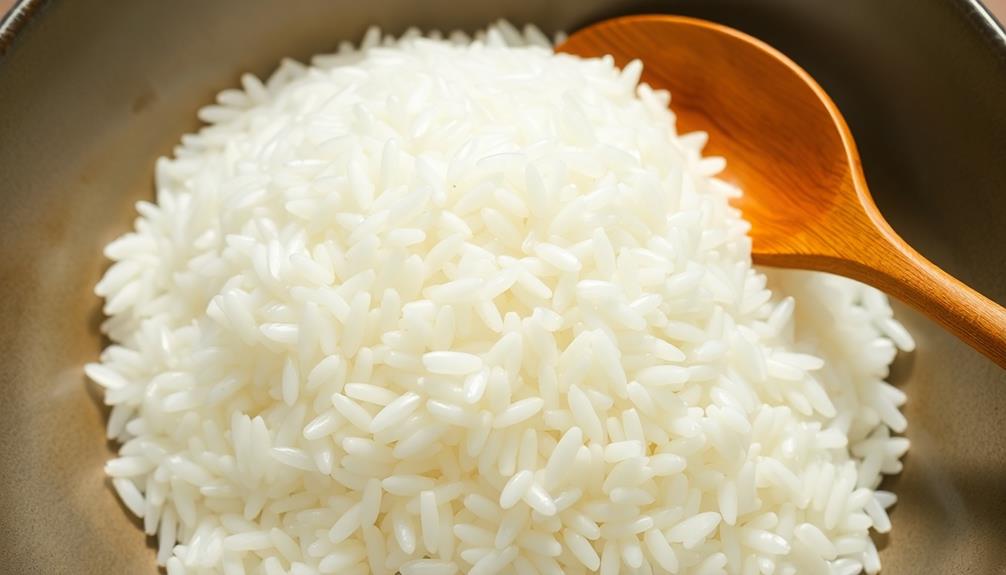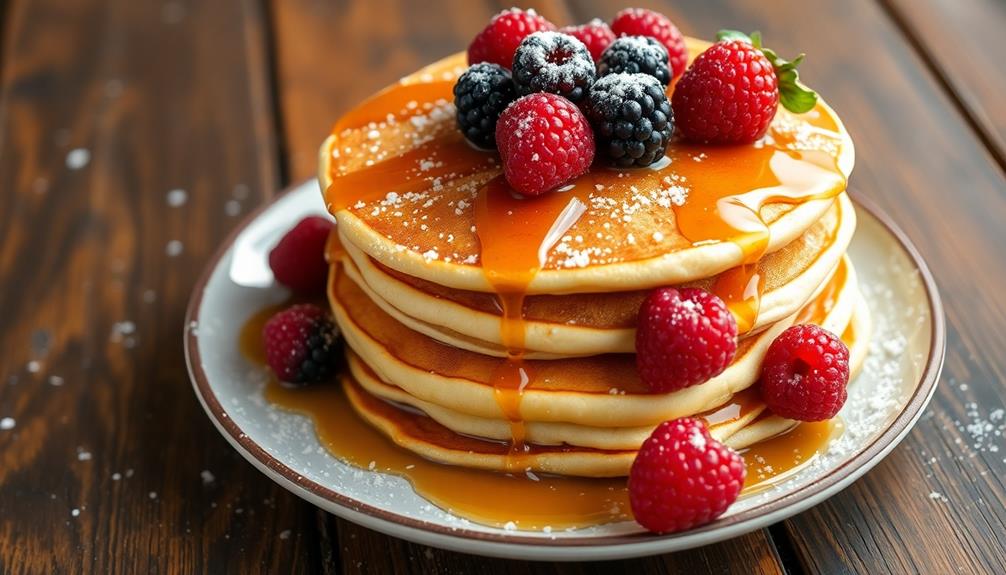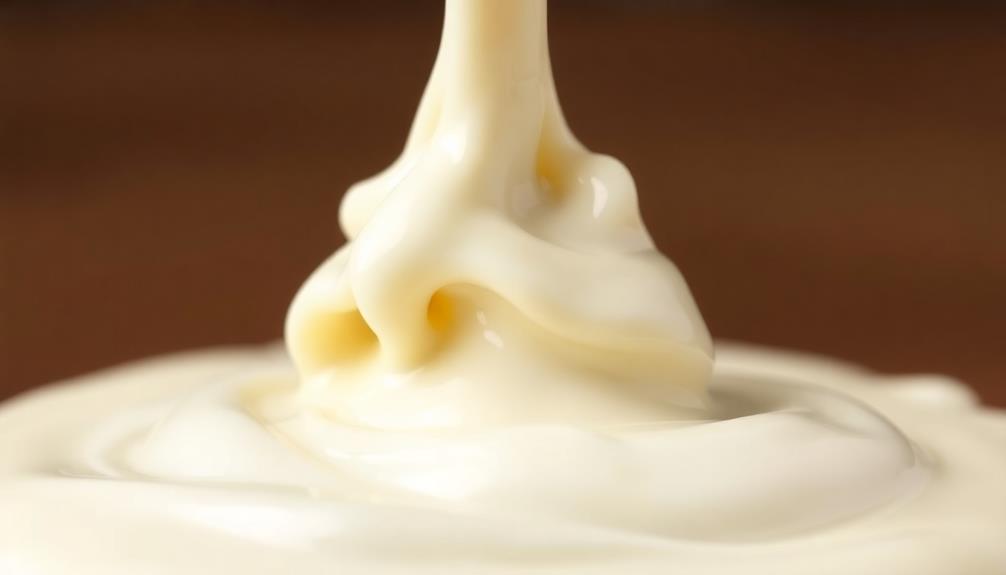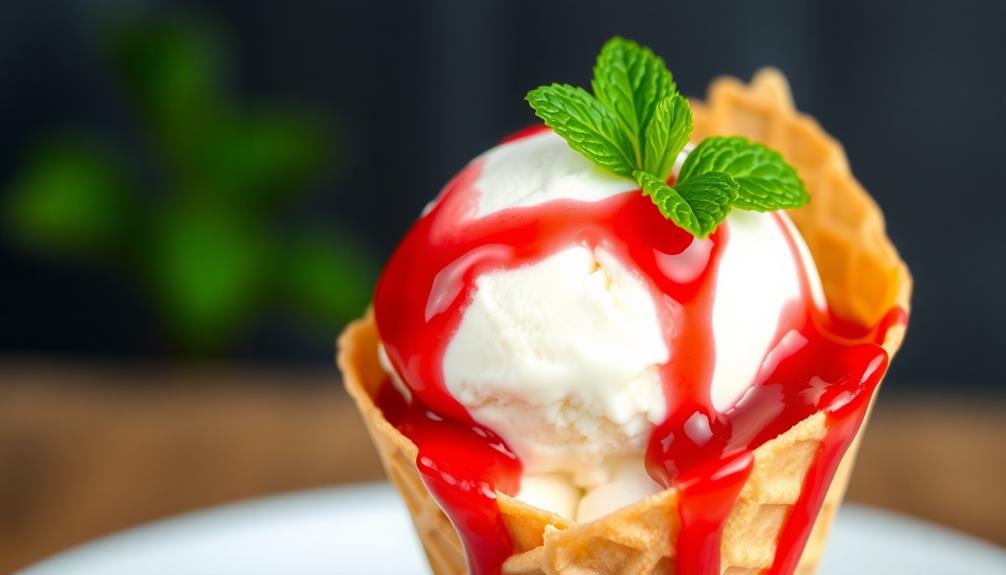Elevating any dish is all about mastering the art of perfect white rice. With a rich history spanning thousands of years, this versatile grain has become a dietary staple across the globe. The key to success lies in the right rice-to-water ratio and cooking method. Start by rinsing the rice to eliminate excess starch, then simmer it until the grains are light and fluffy. Fluffing the rice with a fork before serving ensures an optimal texture. Achieving this level of rice perfection will take your culinary creations to new heights. Intrigued to learn more?
Key Takeaways
- Rinse rice thoroughly to remove excess starch for a fluffy, non-sticky texture.
- Use a 1:1.5 or 1:2 rice-to-water ratio for consistent, well-cooked grains.
- Bring the rice and water to a boil, then reduce heat and simmer until tender.
- Fluff the rice with a fork to separate the grains and allow steam to escape.
- Mastering the basic rice cooking techniques ensures a versatile, perfectly cooked side dish.
History
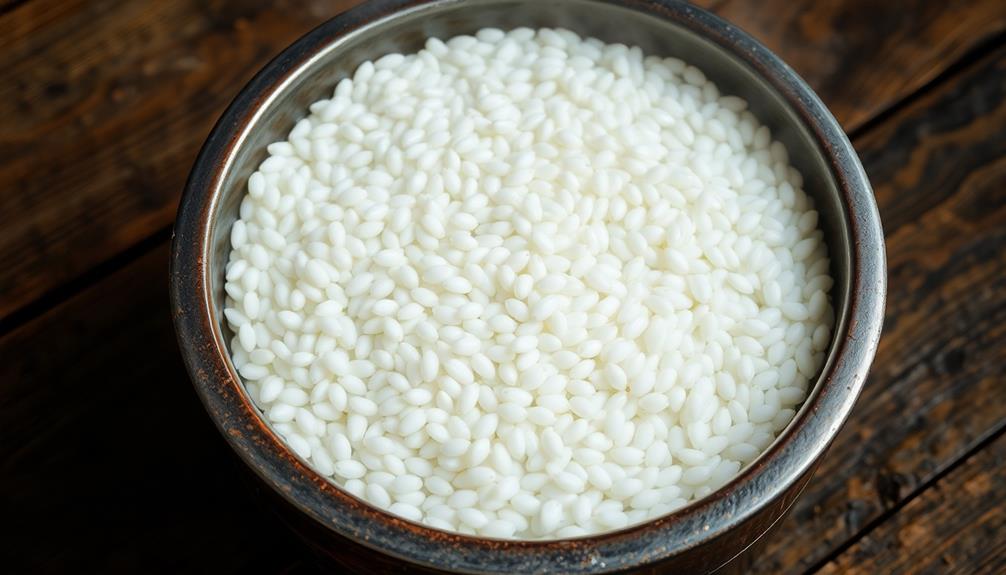
According to historical records, rice has been a staple food in many cultures for thousands of years. From ancient civilizations in Asia to the modern global market, this versatile grain has played a pivotal role in shaping culinary traditions and feeding populations worldwide.
The origins of rice can be traced back to the Neolithic period, where it was first domesticated in China and India. Over time, different varieties of rice emerged, each with its unique characteristics and applications.
The spread of rice cultivation throughout Asia, the Middle East, and eventually, the rest of the world, has been a testament to its adaptability and importance in human history.
Today, rice remains a dietary staple for billions of people, providing a reliable source of carbohydrates, nutrients, and cultural identity. As our understanding of rice continues to evolve, so too do the techniques and methods for cultivating, processing, and preparing this remarkable grain to perfection.
Recipe
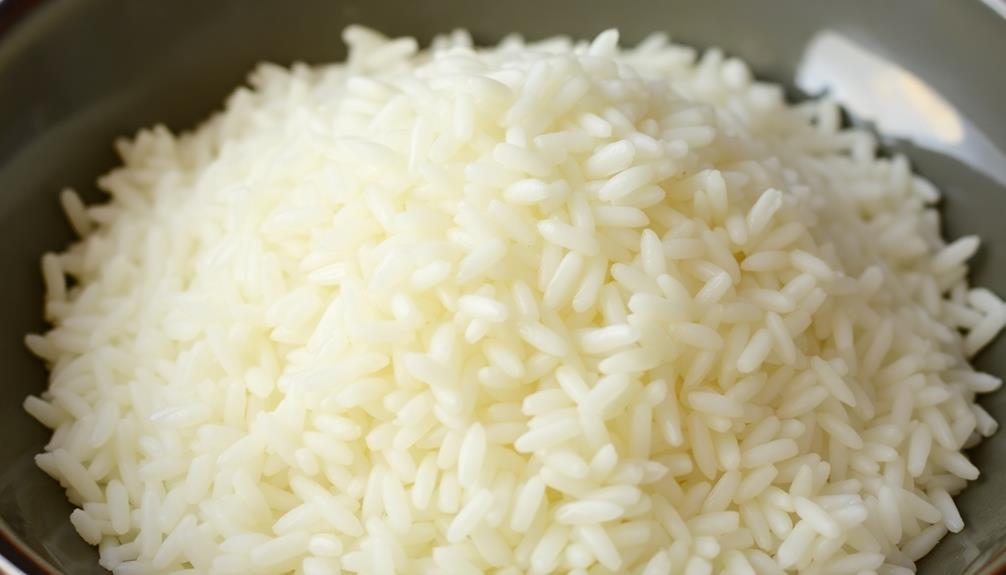
Cooking perfect white rice is an essential skill in any kitchen. The right technique can transform a simple grain into a fluffy, aromatic, and versatile side dish.
Whether you're serving it alongside a curry, stir-fry, or as a base for a rice bowl, mastering the art of cooking white rice will elevate your meals.
The key to achieving the perfect white rice lies in the proper ratio of rice to water, as well as the cooking method. By following a few simple steps, you can ensure your white rice turns out light, tender, and perfectly cooked every time.
Ingredients:
- 1 cup long-grain white rice
- 1 1/2 cups water
- 1/2 teaspoon salt (optional)
Instructions:
Rinse the rice thoroughly under running water until the water runs clear. This step helps to remove excess starch, which can lead to sticky rice.
In a medium saucepan, combine the rinsed rice, water, and salt (if using). Bring the mixture to a boil over high heat. Once it reaches a boil, reduce the heat to low, cover the saucepan with a tight-fitting lid, and simmer for 15-18 minutes, or until the rice is tender and the water has been absorbed.
Fluff the rice with a fork and let it sit, covered, for an additional 5-10 minutes. This resting period allows the rice to finish cooking and ensures the grains remain separate and fluffy.
Serve the perfect white rice immediately, or keep it warm until ready to use.
Cooking Steps
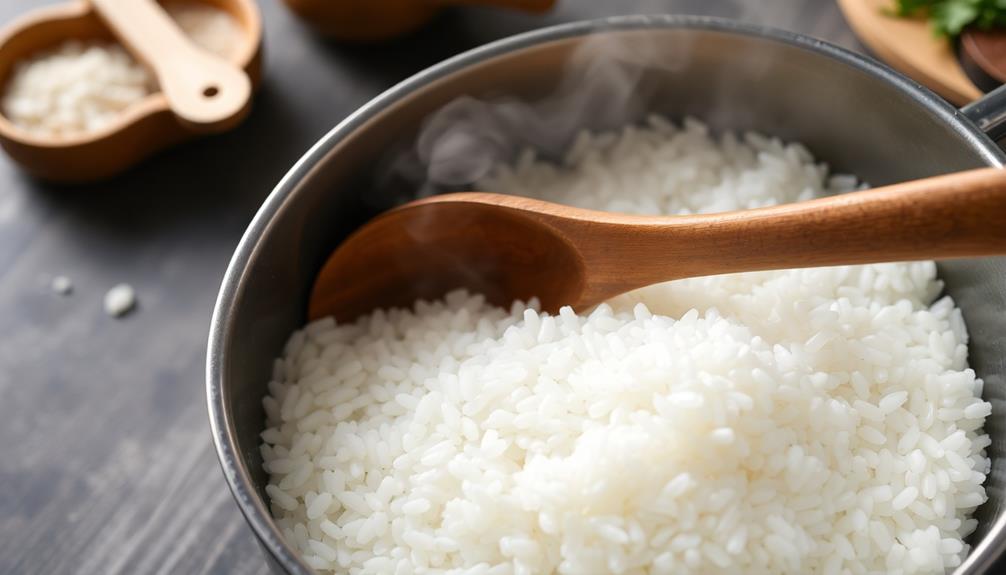
Rinse the rice before cooking to remove excess starch.
Then, add the right amount of water and bring it to a boil.
Reduce the heat, let it simmer uncovered, and fluff the rice with a fork once it's cooked through.
Step 1. Rinse Rice Before Cooking
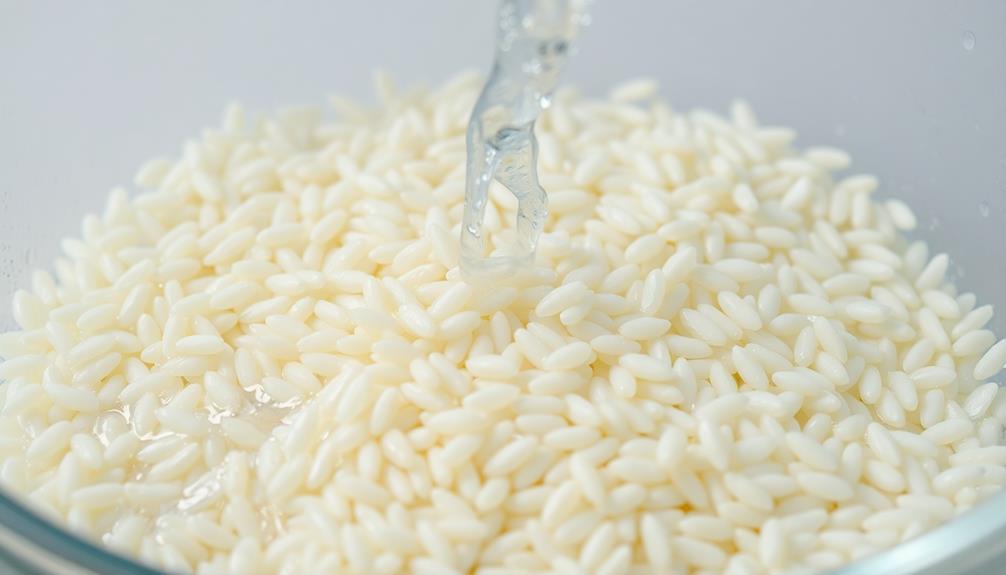
Why rinse the rice before cooking? Rinsing your rice is an essential step that helps remove excess starch and ensures your grains cook up nice and fluffy, rather than sticky and clumped together.
Here's how to do it:
- Place the rice in a fine-mesh strainer and rinse it under cool running water, gently stirring the grains with your fingers. Continue rinsing until the water runs clear, usually 30 seconds to 1 minute.
- This process helps wash away the powdery starch coating the outside of the rice grains. Too much starch can make the rice sticky and gloppy when cooked.
- Rinsing also helps remove any debris or impurities that may be present in the rice. This is especially important for brown rice, which may contain more bran and germ than white rice.
After rinsing, you're ready to cook your rice to perfection! The rinsing step sets you up for fluffy, separate grains every time.
Step 2. Add Water
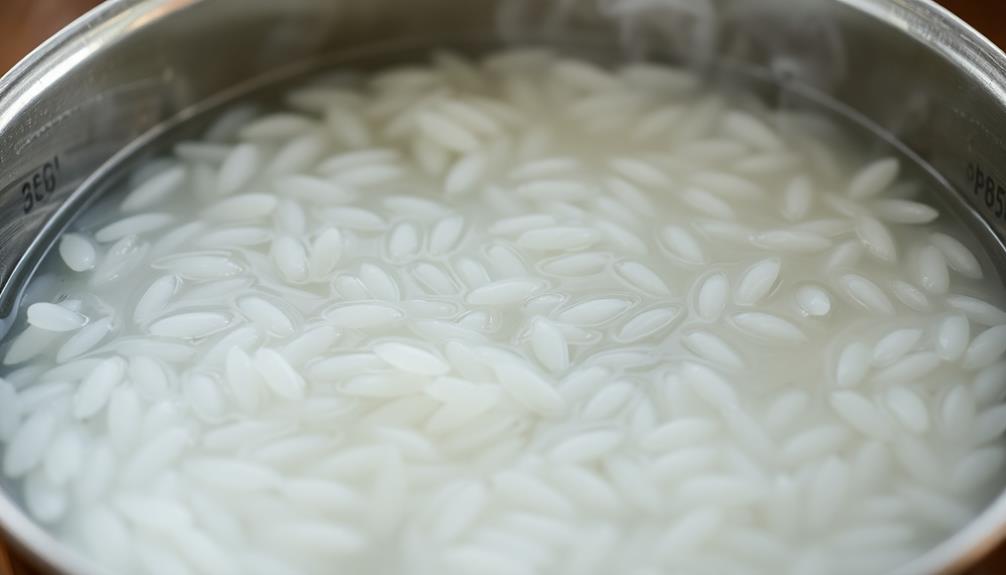
After rinsing the rice, you'll need to add the right amount of water to achieve perfectly cooked grains. The ratio of rice to water is crucial – generally, a 1:2 ratio works well for long-grain white rice. Simply combine 1 cup of rice with 2 cups of water in a saucepan.
Make sure to use cold or room temperature water, as hot water can lead to uneven cooking. Bring the mixture to a boil over high heat, then immediately reduce the heat to low, cover the pan, and let it simmer gently.
Avoid lifting the lid during this process, as it can release steam and disrupt the cooking. Depending on the type of rice, the simmering time can vary from 12 to 20 minutes.
Once the rice has absorbed all the water and is tender, remove it from the heat and let it sit, covered, for 5-10 minutes before fluffing with a fork and serving.
Step 3. Bring to a Boil
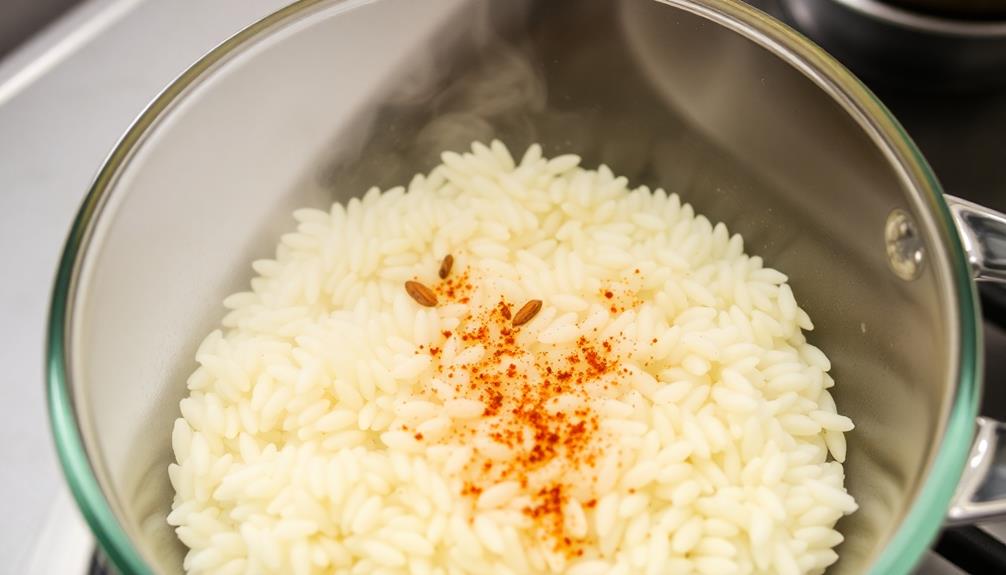
Once the rice and water are combined in the saucepan, bring the mixture to a boil over high heat. This initial boiling stage is crucial, as it kickstarts the cooking process and helps ensure the rice cooks evenly.
Keep a close eye on the pot, as the water can quickly reach a rolling boil. Once the water is at a full boil, you'll notice small bubbles rapidly breaking the surface. At this point, reduce the heat to low, cover the pot with a tight-fitting lid, and let the rice simmer.
Avoid the temptation to lift the lid and peek, as this can release valuable steam and disrupt the cooking. Allow the rice to gently simmer for the recommended time on the package, typically 12-15 minutes. Once the cooking time is complete, remove the pot from the heat and let it sit covered for an additional few minutes to ensure the rice is fully cooked and fluffy. Fluff with a fork before serving, and enjoy your perfectly prepared rice as a side dish or a base for your favorite meals. For a sweet twist, try using some of your cooked rice in an **easy rice crispy treats recipe**—a delicious and creative way to enjoy rice in a whole new form! For those curious about **how to make rice crispy treats**, it’s a simple process involving melted marshmallows, butter, and your cooked rice for a delightful, chewy snack. It’s a fun and easy way to transform an everyday ingredient into something sweet and nostalgic. Whether you serve your rice in savory dishes or incorporate it into desserts, there are endless possibilities to explore! You can also repurpose your perfectly cooked rice into a quick and flavorful meal by trying an easy fried rice recipe. Simply toss your leftover rice with sautéed vegetables, scrambled eggs, soy sauce, and your choice of protein for a satisfying dish that’s ready in minutes. With so many versatile options, rice can easily become a staple in both your sweet and savory culinary creations!
During this simmering stage, the rice will slowly absorb the remaining water, becoming tender and fluffy. Be patient and resist the urge to stir the rice, as this can make the grains become sticky and clumped together.
Step 4. Reduce Heat, Simmer Uncovered
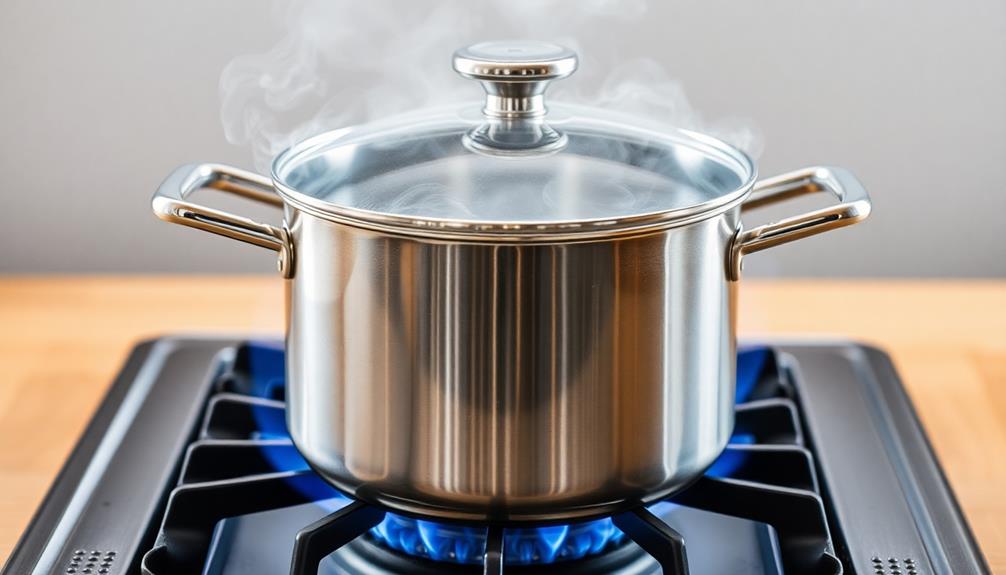
With the water at a full boil, you'll need to reduce the heat to low. This will allow the rice to simmer gently, preventing it from overcooking or becoming mushy.
Simmering uncovered is essential, as it allows excess moisture to evaporate, resulting in fluffy, separate grains.
Once the heat is reduced, set a timer for 15-20 minutes, depending on the type of rice you're using. Long-grain white rice typically takes around 18 minutes, while short-grain or sushi rice may only require 15 minutes.
During this simmering phase, resist the urge to lift the lid and peek – this will release valuable steam and disrupt the cooking process.
As the rice simmers, you may notice tiny holes or craters forming on the surface. This is a good sign, indicating that the rice is absorbing the liquid and nearing perfection.
When the timer goes off, the rice should be tender, with each grain separate and fluffy.
Step 5. Fluff Rice With Fork
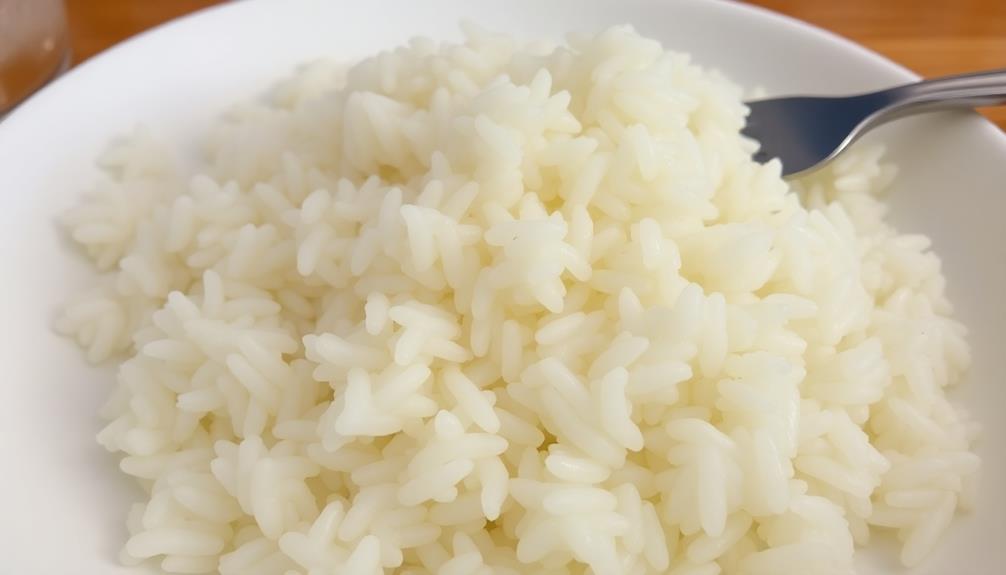
The rice's simmering time has elapsed. Now it's time to fluff the grains with a fork. This simple step is essential for achieving the perfect texture – fluffy, light, and separate.
First, grab a fork and gently insert it into the pot, taking care not to mash or crush the delicate rice. Slowly lift and turn the grains, allowing air to circulate and the texture to lighten. Be gentle and avoid over-stirring, as this can lead to a gloppy, sticky result.
Next, cover the pot with a clean kitchen towel and replace the lid. Allow the rice to steam for an additional 5-10 minutes. This step further separates the grains and helps remove any remaining moisture.
Final Thoughts
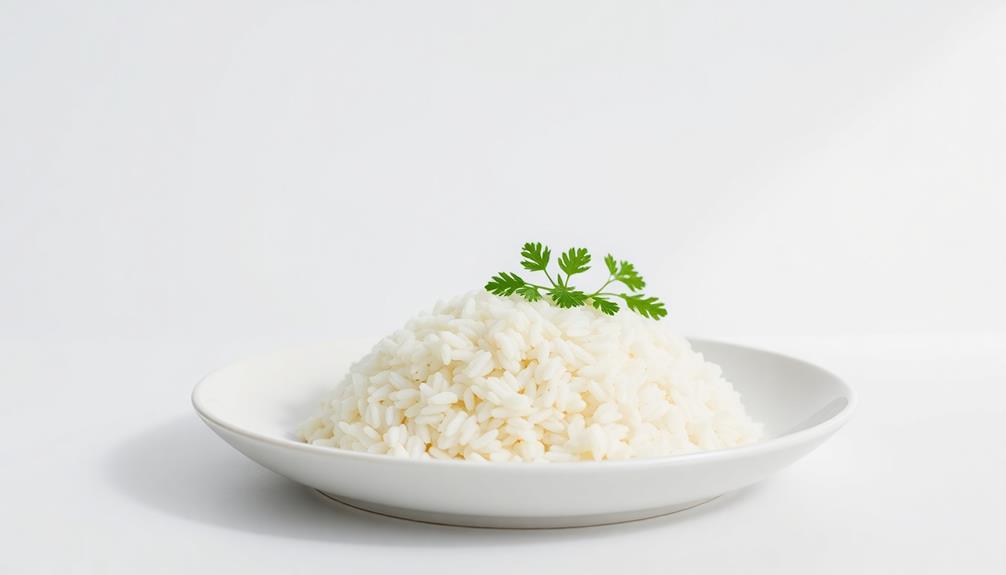
Ultimately, you've mastered the art of cooking perfect white rice.
With the techniques you've learned, you can now confidently prepare this versatile grain for any dish.
Whether you're serving it alongside a savory curry, using it as a base for a rice bowl, or enjoying it simply with a sprinkle of salt, you can be assured of consistently fluffy and well-cooked results.
Frequently Asked Questions
What Makes a Rice Variety Suitable for a Specific Dish?
The suitability of a rice variety for a dish depends on factors like grain size, texture, and stickiness. These properties determine how well the rice absorbs flavors and holds its shape during cooking, making it suitable for your preferred dish.
How Do I Measure the Right Water-To-Rice Ratio?
To measure the right water-to-rice ratio, you'll need to consider the rice variety. Generally, use a 1:1 or 1:1.25 rice-to-water ratio. Adjust as needed based on the rice type and your desired texture.
Can I Use the Same Method for Short-Grain and Long-Grain Rice?
Yes, you can use the same water-to-rice ratio for both short-grain and long-grain rice. The method works for any type of rice, as long as you adjust the cooking time based on the rice variety.
How Do I Prevent the Rice From Becoming Mushy or Sticky?
To prevent your rice from becoming mushy or sticky, use the right rice-to-water ratio, simmer gently, and avoid lifting the lid during cooking. Fluff the rice with a fork once it's done to keep the grains separate.
Is There a Way to Achieve the Perfect Texture Consistently?
To achieve the perfect texture consistently, you need to follow a few key steps. Rinse the rice thoroughly, use the right rice to water ratio, and cook it at the proper temperature and duration. With some practice, you'll master the perfect texture every time.
